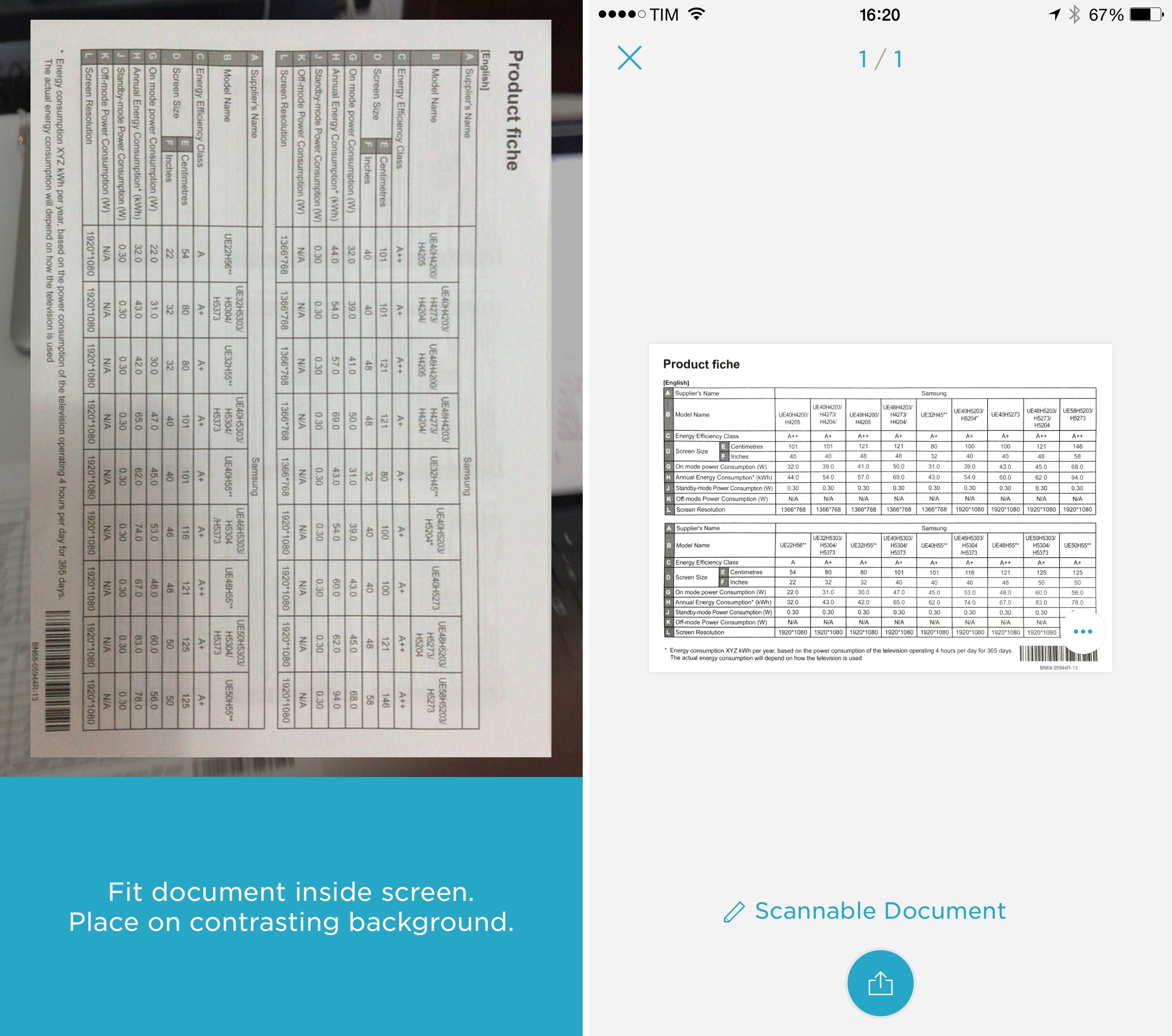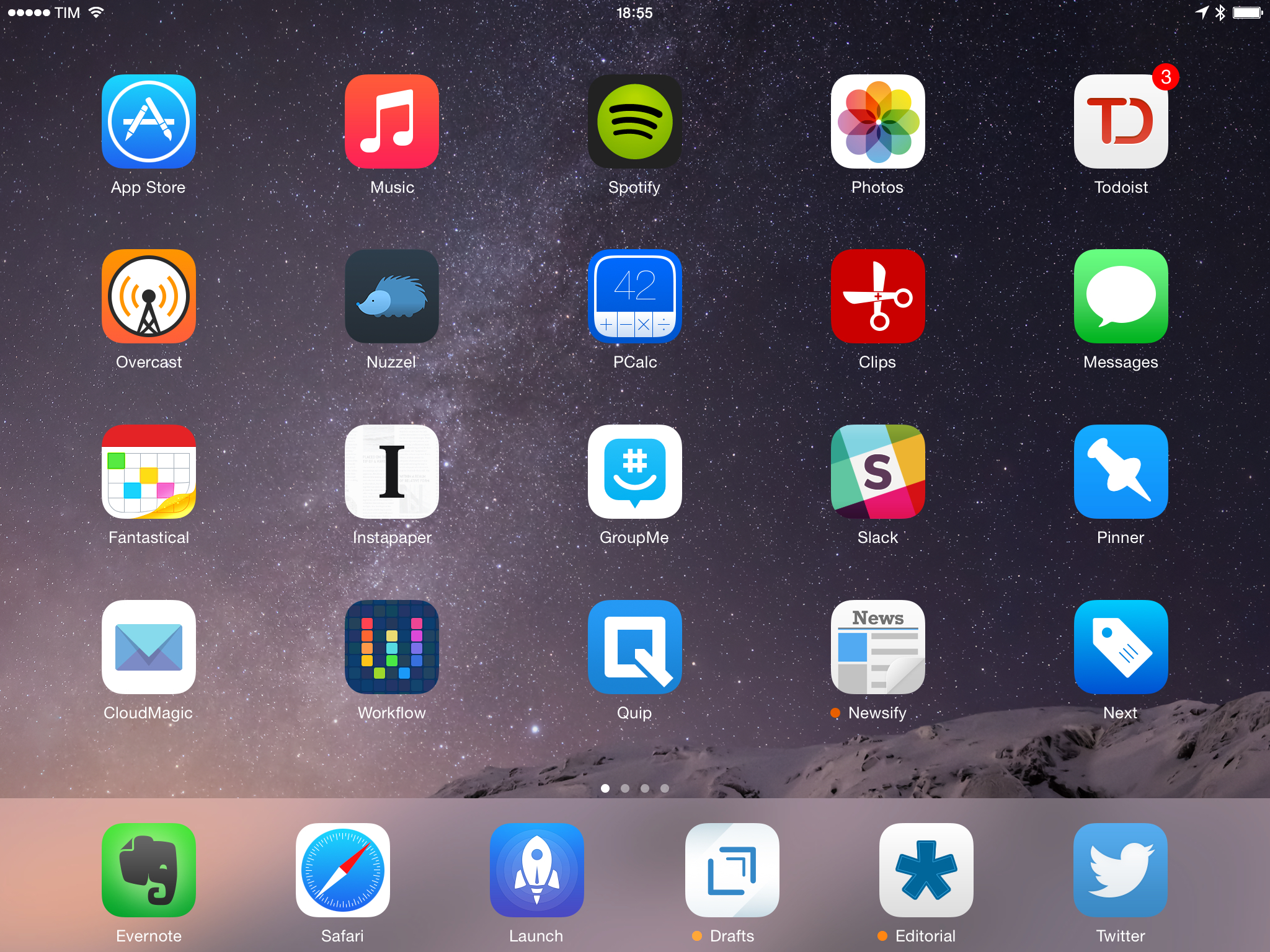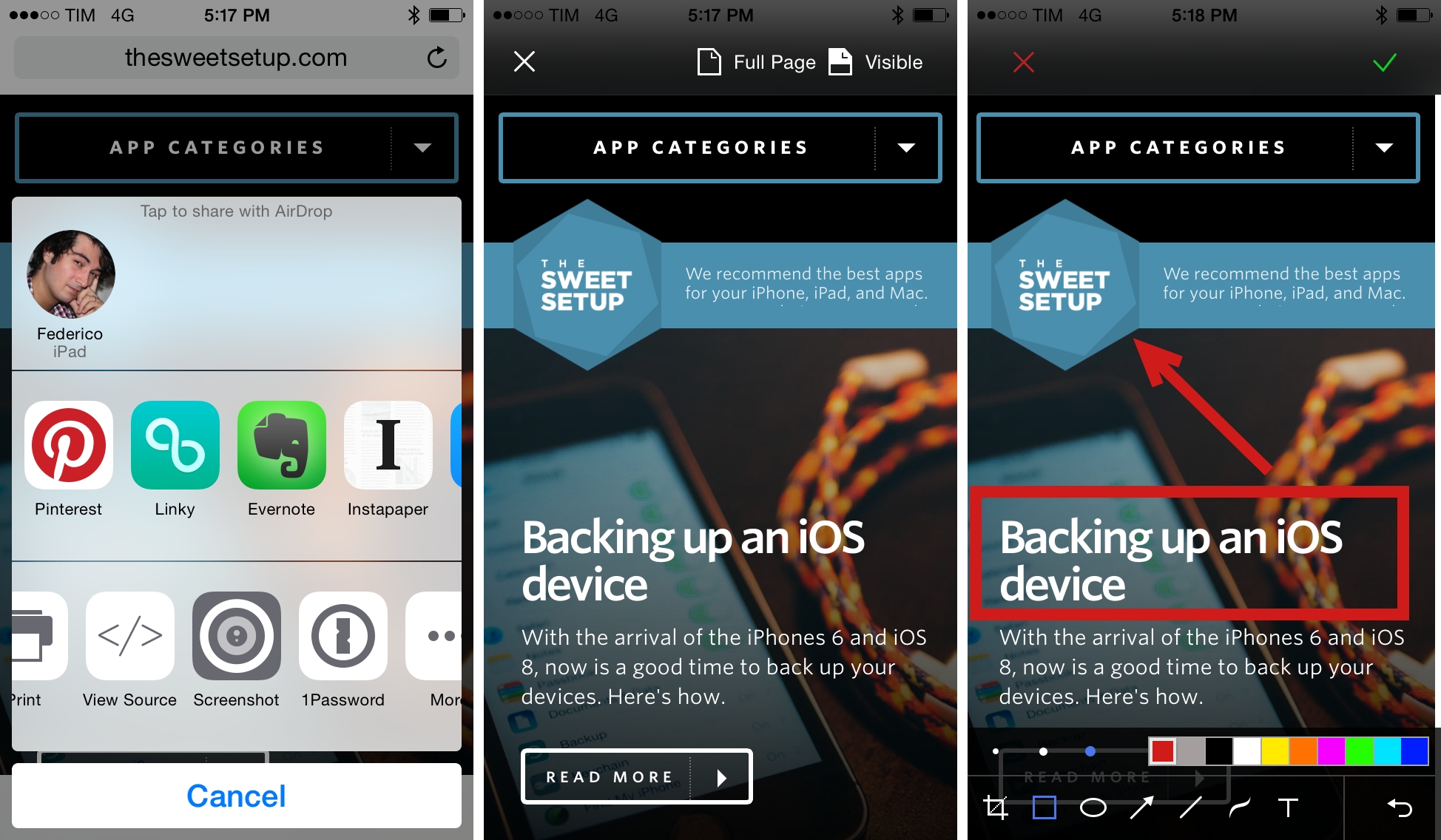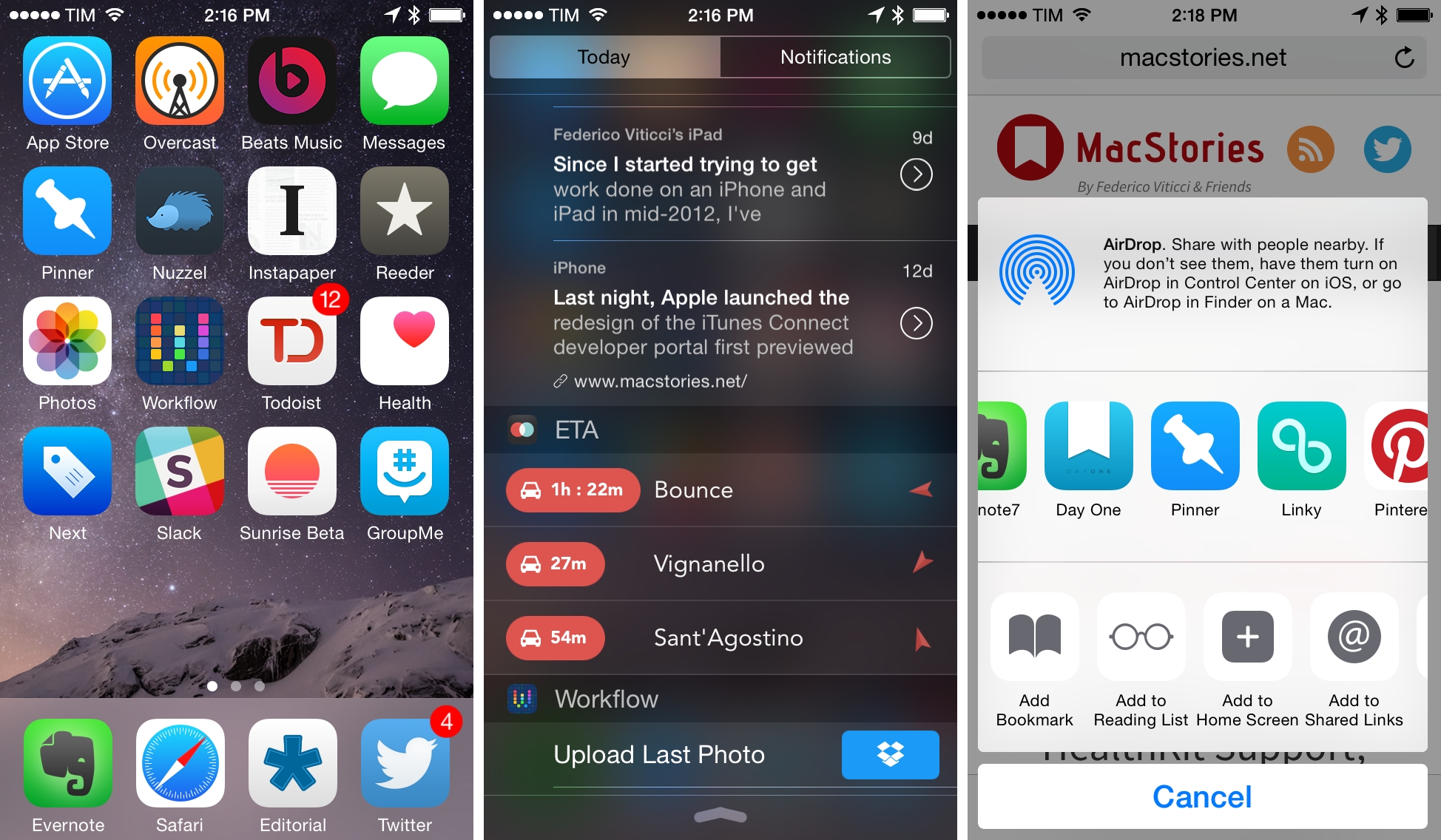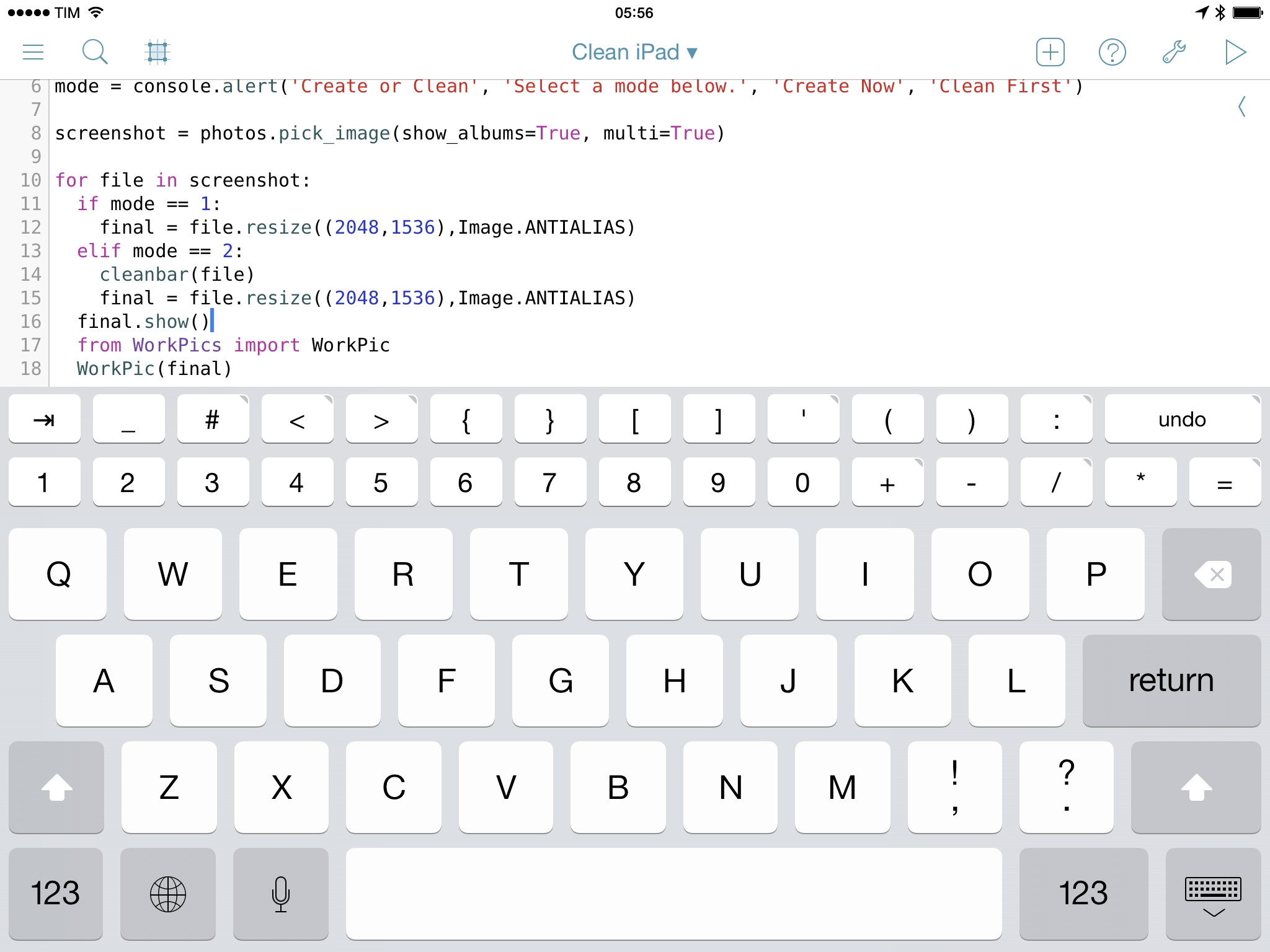I was in the process of finalizing my taxes for the past year last week, and, much to my chagrin, I realized that I had a drawer full of printed invoices for purchases that I hadn’t converted to PDF and sent to my accountant. It was the perfect excuse to properly test Evernote’s Scannable app in a real-life scenario alongside the iPhone 6 Plus I’m trying for the next couple of weeks.
Search results for "Skitch"
Paperless Expenses and Evernote Scannable
My Must-Have iPhone Apps, 2014 Edition
For the past four years, I’ve been running a series called My Must-Have Apps that, once a year, collects all the apps I find indispensable to get work done on my iPhone, iPad, and Mac. Considering changes to my daily life and workflow, this year only features my must-have iPad and iPhone apps.
The iPhone has changed my professional life, and it’s a powerful and essential pocket computer that I carry with me all the time. But I prefer to get work done on my iPad.
There was a time when I thought that I could work entirely from my iPhone; after upgrading to a cellular iPad two years ago and once I began moving to an iPad-centric workflow, I realized that the tablet was the iOS device that I preferred for writing, reading, doing email, and watching movies. For millions of users, the iPhone turns into a mobile computer as soon as they step away from the comfort of a desk with a Mac. But I’ve come to realize that I’d rather have two iOS devices with me at all times – a smaller iPhone and a bigger iPad – than one that tries to do everything at once. Which is why, ultimately, I decided to go with an iPhone 6 and an iPad Air 2 this year.
In spite of my personal preference, though, I can’t deny the fact that, nowadays, it’s hard to find iOS apps – and especially utilities or productivity-related apps – that aren’t Universal. The trend of “iPad-only” and “iPhone-only” apps has been substantially downsized in recent years – none of the apps on my iPad Home screen are exclusive to the iPad at this point. So while I like and use the iPhone more for listening to music, taking pictures, or monitoring my health data, I still end up installing a text editor, a shortcut launcher, and a Python interpreter on my iPhone because they’re available and because why not. This isn’t an ideal scenario – too many developers are making iOS apps that simply scale across screen sizes without taking advantage of the unique features of each platform – but that’s beyond the scope of this series.
It was tough to compile a list of must-have iPhone apps this year: I’ve already covered most of them in my iPad article, and I don’t use the iPhone as much as my iPad. But at the same time, I realized that, for those times when I needed to work from my iPhone, those smaller iPad apps were absolutely necessary, even if not running on a screen size that I’m comfortable with. And, more importantly, I believe the article can be useful to readers who had no interest in iPad apps and my iPad workflow.
This year, I’ve only covered iPad and iPhone apps, as I practically don’t use a Mac anymore. For apps shared across my iPad and iPhone, I used the same base descriptions, with differences for the iPhone versions noted and rewritten where necessary. This is a remix and addendum to my must-have iPad apps.
In the list below, you’ll find apps organized in seven sections:
- Work Essentials
- Social
- Audio and Music
- Photos and Screenshots
- News
- Health
- Utilities
At the end of the article, you’ll also find my iPhone App of the Year and a Runner-up. Each app has a direct iTunes link, and, where possible, I’ve included links to previous MacStories coverage as well.
My Must-Have iPad Apps, 2014 Edition
For the past four years, I’ve been running a series called My Must-Have Apps that, once a year, collects all the apps I find indispensable to get work done on my iPhone, iPad, and Mac. Considering changes to my daily life and workflow, this year will only feature my must-have iPad and iPhone apps. As with last year, I want to start from the iPad.
Over the past two and a half years, my workflow has become increasingly iOS-centric. Changes in my personal and professional life have convinced me that iOS is the best platform for me, with a rich ecosystem of apps that allow me to work faster and more efficiently no matter where I am. This year, my iPad has essentially replaced my MacBook Air, which I now primarily use to watch movies and record podcasts.
There’s a few tasks that I still can’t get done on an iPad, but the list is shrinking, and, thanks to iOS 8, developers are coming up with new ways to make working on iOS more feasible and pleasant. I don’t use my iPad as a computer just to prove a point or because it’s a popular topic among readers and listeners of Connected: I need my iPad, the apps it runs, and the workflows I’ve created to automate what I do on iOS.
It is with extreme seriousness, then, that I take a look at the apps I consider my “must-haves” each December and compile them in a list for MacStories. This allows me to sit down and calmly evaluate how I use my devices, the software I depend on, and how much the way I use apps has changed in 12 months.
This year, I’ll only cover iPad and iPhone apps, starting with the iPad. In the list below, you’ll find apps organized in eight sections:
- Work Essentials (apps that I need and use for work every day)
- Social
- News & Links (apps to read and discover interesting news)
- Audio (apps for music and podcasts)
- Calculators
- Images
- Extensions, Widgets, and Keyboards
- Everything Else
At the end of the article, you’ll also find a few statistics about this year’s collection as compared to last year’s and my iPad App of the Year. Each app has a direct iTunes link, and, where possible, I’ve included links to previous MacStories coverage as well.
Evernote Wants to Go Beyond Note-Taking→
At its conference in San Francisco today, Evernote announced a slew of updates for its core iOS and OS X experience as well as a redesigned web app (currently available as public beta), a redesign of Penultimate, a new scanner app, and new Market products.
Harry McCracken has an overview of the announcements at Fast Company. He concludes with a legitimate concern:
As a pretty committed Evernote user–I have more of my digital life stored there than any one other single place–all of these announcements leave me both excited and at least a tad concerned. Profoundly useful though the service is, it’s never quite felt like it’s nailed the best, simplest, most intuitive interface for what it does. (The fact that it has a habit of radically redoing its user interface on a regular basis is presumably an acknowledgement of that.) Adding more features will only make it tougher to keep Evernote coherent and approachable.
I’m curious to check out the updates to the iOS apps (I use Evernote for work every day) and the redesign of the Mac app for Yosemite looks nice. I’m a fan of the web app: by default, it lets you write a new note with just a few clicks, but it packs most of the features available in other versions of Evernote. It was a much needed change.
I have my doubts about the contextual and messaging features Evernote announced, but they also have potential and I’d rather wait until I can try them. I’m not sure I’d ever benefit from links pulled in from the WSJ or LinkedIn while I’m doing research, but other sources would be welcome. As for messaging, it is going to be hard for Evernote to beat the workplace integration that’s being built by Slack, but I imagine it could be a nice plus for businesses that rely heavily on Evernote internally.
I liked the tone and message of the keynote. Phil Libin is a good presenter and he genuinely seems to be invested in Evernote as a product. Evernote is often derided for their frequent redesigns, but they have struck a good balance with iOS 7 in the past year (both Evernote and Skitch are now highly polished and functional apps) and the Yosemite update looks like a moderate refresh rather than a ground-up redesign. Evernote has insanely high goals – software for “your life’s work” is the new slogan – and a willingness to adapt to people’s ever-changing needs can be a good thing. The partnership with News Corp. seems a little strange, but, overall, the event was solid.
Check out the Evernote blog for details on Context, the new web app, and Work Chat.
Awesome Screenshot Captures Webpages As Screenshots with an iOS 8 Extension
Available for free on the App Store, Awesome Screenshot lets you capture screenshots of webpages from Safari through an action extension. The idea is a great one – I’ve always looked for a more integrated way of capturing webpages directly in Safari for iOS – but the execution has a couple of flaws that I’d like to see fixed soon.
iOS 8 Changed How I Work on My iPhone and iPad
When I reviewed iOS 7 last year, I took a different approach and tried to consider Apple’s redesigned OS from the perspective of someone who uses iPhones and iPads for work and personal tasks on a daily basis. I noted that a new structure enabled developers to make more powerful apps, and I concluded hoping that Apple would “consider revamping interoperability and communication between apps in the future”.
With today’s release of iOS 8, Apple isn’t merely improving upon iOS 7 with minor app updates and feature additions. They’re also not backtracking on the design language launched last year, which has been refined and optimized with subtle tweaks, but not fundamentally changed since its debut in June 2013.
Apple is reinventing iOS. The way apps communicate with each other and exchange functionality through extensions. How status awareness is being brought to iPhones, iPads, and Macs with Handoff and Continuity. Swift and TestFlight, giving developers new tools to build and test their apps. Custom keyboards and interactive notifications.
There are hundreds of new features in iOS 8 and the ecosystem surrounding it that signal a far-reaching reimagination of what iOS apps should be capable of, the extent of user customization on an iPhone and iPad, or the amount of usage data that app developers can collect to craft better software.
Seven years into iOS, a new beginning is afoot for Apple’s mobile OS, and, months from now, there will still be plenty to discuss. But, today, I want to elaborate on my experience with iOS 8 in a story that can be summed up with:
iOS 8 has completely changed how I work on my iPhone and iPad.
Pythonista 1.5: Custom Interfaces, matplotlib, and No More “Open In”
Pythonista 1.5, the latest version of Ole Zorn’s Python interpreter for iOS, has been released today on the App Store, bringing new modules, native integrations, UI refinements, and the removal of the Open In feature to comply with Apple’s App Store guidelines. Pythonista 1.5 is another fantastic update to one of the most powerful and flexible iOS apps ever made, and it follows in the footsteps of Editorial 1.1, released last month.
iOS 8 Extensions: Apple’s Plan for a Powerful App Ecosystem
Amidst the variety of announcements from WWDC 2014, Extensibility – a new set of technologies for developers to extend their apps – has been mainly regarded as Apple’s solution to the lack of inter-app communication on iOS.
Traditionally, iOS has been a closed platform in terms of software personalization and extensibility: due to a combination of design choices and strict enforcement of sandboxing rules, iOS users never enjoyed many of the benefits found on Google’s mobile operating system. Android users could, for instance, install system-wide replacement keyboards or pick documents from any app advertised as a storage location; iOS users, on the other hand, were forced to deal with unnecessary copies created by an outdated Open In system or stick with Apple’s dubious keyboard design in iOS 7.
Simultaneously, with Apple focusing on Maps improvements and a new design foundation for iOS, a few third-party developers took up on the task of creating apps and protocols capable of extending iOS as much as possible leveraging the tiny holes left by Apple in its sandbox.
We’ve seen a proliferation of apps that use URL schemes to facilitate the process of launching other apps and passing text to them; bookmarklets – pieces of JavaScript code executed in the browser – to let Safari communicate with third-party apps; developers creating their own SDKs and app ecosystems to solve document management; Fleksy – a popular Android keyboard – making an iOS SDK; a Python interpreter and a text editor with a workflow automation system, developed by a one-man shop in Germany.
The third-party iOS development community has been incredibly creative in spite of Apple’s longstanding limitations on iOS, but many of the devised solutions – especially URL schemes – were, ultimately, hacks and workarounds based on a protocol that wasn’t intended to let multiple apps communicate and exchange data.
With iOS 8, Apple wants to make iOS more flexible and powerful by letting developers extend custom functionality and content beyond their apps, making it available to users in other parts of the OS – and all while maintaining a secure design model, user privacy, good performance, and battery life.
As someone who’s invested in iOS as a productivity platform and uses the iPad as a primary computing device every day, I welcomed Apple’s move with excitement and optimism, but I also wanted to investigate the actual scope of the technology the company will ship later this year.
iOS 8 Wishes
With iOS 7, Apple profoundly altered the foundations of their mobile operating system’s design and functionality, and I want to believe that iOS 8, likely due later this year, will allow them to keep building towards new heights of user enjoyment, design refinement, and exploration of features suitable for the post-PC era. The transition to iOS 7 hasn’t been perfectly smooth, but, less than two months away from WWDC, there’s clear, promising potential on the horizon: plenty of new iOS low-hanging fruit.


